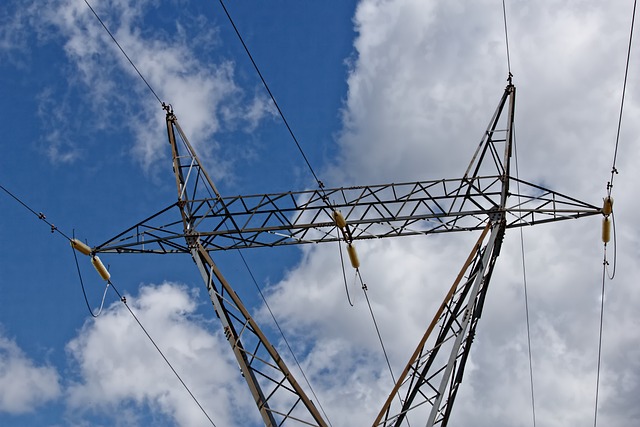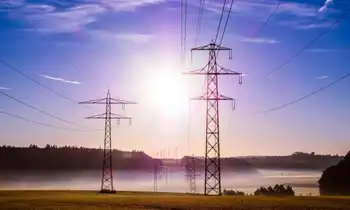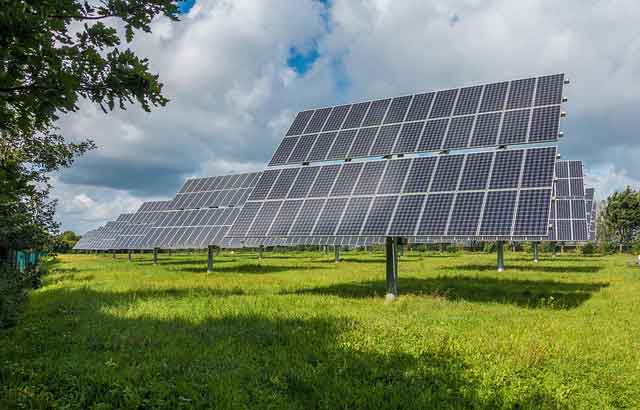Bear Creek offers example of wind farm development
Construction of the wind turbine farm began in 2005 and was finished in March 2006. Since then, the farm has been supplying energy when the wind blows.
At 2,800 feet above sea level on 130 acres of land operated by Bluarc Management Group and Community Energy, Bear Creek Wind Farm has the capacity to create 24 megawatts of power each year, Todd Solliday, project manager, said. Bear Creek, he said, usually operates at 30 percent capacity until the winter months when winds are stronger and it runs near 70 percent capacity.
The farm, Solliday said, creates enough energy to power about 7,200 homes for a year.
All 12 Gamesa brand turbines that stand on Bald Mountain cost about $2 million each.
In November, at turbine No. 8, wind pushed the massive blades, creating a dull "whoosh" sound. The wind was calculated to be blowing at 9 mph that day.
Each tower weighs 190 tons and each rotor weighs 102 tons. From the base to the center of the control hub, a turbine measures 256 feet. Each blade, weighing 7 tons, is 139 feet long from tip to base. The rotor diameter is 286 feet.
Wind farms receive a tax credit based on wind output and the units of electricity generated.
Jay Carlis, vice president of sales and management at Community Energy, Radnor, said government funding for alternative energy projects comes and goes. He said generally wind farms don't make money in the first year of operation because so much is spent to build them. He said it is "a big capital investment" that won't see payback for seven to 10 years.
A Sunbury firm plans to build a farm on top of Buck Mountain in Black Creek Township, Luzerne County and Beaver Township, Columbia County, once it receives the necessary government approvals. Twenty-two turbines will be installed, four of them will be in Black Creek. When Penn Wind originally submitted its plans to Black Creek, several residents showed concern for environmental, safety and financial impacts.
The Freeland Municipal Sewer and Water Authority this month entered into a lease agreement with enXco of California for a potential wind farm. Studies testing wind speed and capacity are currently taking place on 500 acres of authority-owned land in Upper Lehigh, Foster Township.
There are plenty of concerns about wind farms.
There are also plenty of misconceptions, according to Solliday and Carlis.
Just searching for the phrase "wind farm" on YouTube.com pulls up videos of dangerous and sometimes catastrophic events surrounding turbines.
"Everyone sees it on YouTube but it can be compared to shark attacks because it's so random and rare," Carlis said.
In one video, a turbine catches fire, engulfing the multi-million-dollar device in flames.
Solliday said any time high-voltage electricity is involved there is always a possibility of fire, but wind farm companies do what they can to mitigate the risks.
"We don't want a $2 million turbine to burn down," Solliday said.
Another video shows a turbine in Denmark exploding into pieces, scattering debris across the landscape. Solliday said the same thing happened a few years ago in Oklahoma. He said those instances usually occur after a technician overrides the turbine's braking system. He said automatic brakes are designed to stop the turbine if it begins to move too quickly to prevent explosion.
Then there's the video of ice built up on the turbine's blades being flung from the massive devices.
Solliday said the Bear Creek site already has been shut down and the turbines turned off until ice melts from the blades. He said ice buildup typically won't allow the rotor to move when the wind blows because of the ice weight. Also, Carlis said, wind farms are typically built far enough away from communities to prevent injury or damage to people and property.
What about winged creatures getting caught in the turbines' blades?
Carlis said wind power contributes to fewer bird fatalities than natural causes. He said a study showed turbines killed 75,000 birds in a year, while birds flying into windows contributed to between 100 million and 1 billion deaths and cats contributed to between 100 million and 500 million in a year.
Electricity produced by the wind farms will offset the amount of emissions released by conventional generation, providing greener energy resources, Carlis said.
There is no need for fuel, ash removal or water treatment chemicals at a wind farm, he said, creating a safer environment.
Solliday said it costs less to operate a wind farm because less staff is needed than at a traditional energy plant.
Power from Bear Creek is used by PPL Energy Group, a deregulated arm of PPL Utilities, Carlis said. PPL and the wind farm entered into a 20-year power-purchase agreement.
PPL spokeswoman Lisette Santana said the company purchases between 52,000 and 59,000 megawatt-hours of energy from Bear Creek each year. It also purchases between 57,000 and 64,000 megawatt-hours of power annually from Locust Ridge, a 26 megawatt wind farm in Schuylkill County.
The addition of wind farms as PPL's energy sources won't prevent electric rate increases but is an important part of how electricity is generated because it is emission-free, Santana said. About 10 percent of PPL's energy comes from renewable projects, such as wind farms, hydroelectric, biogas landfills and solar plants.
Santana said turbines aren't reliable as a sole source of energy due to the wind being intermittent. When the wind isn't blowing, power isn't generated from turbines, she said. But as the years progress, she said, alternative energy will be improved and upgrades will be made to PPL infrastructure to create more efficient alternative-energy transmission.
Wind farms, Carlis said, create jobs for turbine manufacturing in the United States. As the industry grows so will the number of jobs, Carlis said. People traveling for work on wind farms also use local hotels and patronize local businesses, he said.
"It creates a ripple effect in the host community," Carlis said.
Bear Creek Township Supervisors Chairman Gary M. Zingaretti wasn't on the board when the wind farm project was submitted to the township but he lives right next to the access road for the site.
He said he can hear noise at his home from the turbines spinning. The closest one to his house is about two-thirds of a mile away.
Zingaretti said people in other areas have said the turbines get very loud at times, but since he has been a supervisor for the past two years there have been very few complaints.
The township recently amended its wind farm ordinance to prevent future wind farms from being built too close to homes, he said. He said all municipalities should have a wind turbine ordinance in place to protect the community and prevent environmental and safety concerns.
He said when the news hit of a wind turbine farm there was a concern for safety, health and quality-of-life issues. Residents, Zingaretti said, should research the track record of a wind turbine developer interested in breaking ground in their hometown.
Zingaretti said the Bear Creek developer made it known early on that they wanted to be "a good neighbor" and fixed problems residents complained about, such as water runoff.
The township, he said, set up a contract with the developer and reaps a yearly per-turbine fee that started at $2,500 during the first year of operation. With inflation that number grew to the present-day per-turbine fee of $3,000 annually. Last year, Zingaretti said, the township received $36,000 in revenue for the turbines.
"It certainly helps financially to have that in the township. Obviously, that's $36,000 we don't have to get from our residents," he said.
The few employees at the wind farm, he said, also contribute to tax revenue.
Planning commission Vice Chairman Richard Kresge Jr., said there are pros and cons to wind farms.
From an energy production standpoint and from an additional revenue source for municipalities, wind turbines are a benefit. However, he said there are those that argue the wind farm changed the character of the rural township by affecting aesthetics.
He said in Bear Creek, it seemed once residents caught wind of the turbine project, they had questions and concerns for it but it was too far along in the development process to address some of them. He said residents should come to all public meetings held on wind farm developments early on and be informed of those meetings with ample time.
Kresge recommended municipalities to ensure developers go through the proper subdivision and land development process in municipalities and to involve the public early on. "If there's any recommendation I can give is go through the proper channels," he said. "Go through planning, zoning and public participation. And then at the end of the day if they can demonstrate they can address the concerns of the township regulations I think it could be a positive thing," he said.
Related News

B.C. government freezes provincial electricity rates
VICTORIA - British Columbia's NDP government has announced it will freeze BC Hydro rates effective immediately, fulfilling a key election promise.
Energy, Mines and Petroleum Resources Minister Michelle Mungall says hydro rates have gone up by more than 24 per cent in the last four years and by more than 70 per cent since 2001.
"After years of escalating electricity costs, British Columbians deserve a break on their bills," Mungall said in a news release.
BC Hydro had been approved by the B.C. Utilities Commission to increase the rate by three per cent next year, but Mungall said it will pull back its…




